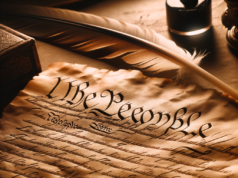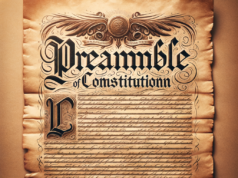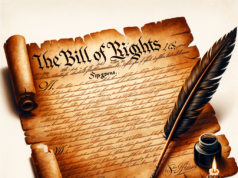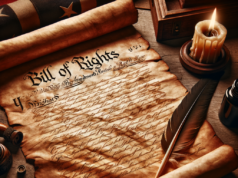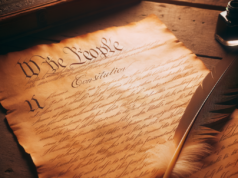
The Thirteenth Amendment: Abolishing Slavery and Ushering in a New Era of Freedom
Introduction
The Thirteenth Amendment to the United States Constitution is a monumental milestone in American history. Ratified on December 6, 1865, it forever changed the fabric of the nation by officially abolishing slavery. This pivotal amendment, born from the ashes of the Civil War, was a crucial step toward achieving the promise of freedom and equality for all Americans. In this article, we will explore the historical context, significance, and enduring impact of the Thirteenth Amendment, shedding light on its intricate details, its champions, and the legacy it left behind.
Historical Context
The Thirteenth Amendment was the culmination of a long and arduous struggle to eradicate the institution of slavery in the United States. Slavery had been deeply ingrained in the country’s history and economy for centuries. Its roots extended back to the colonial era when enslaved Africans were first brought to North America in 1619. Over time, slavery had become an integral part of the Southern agrarian economy, while the North gradually moved towards an industrialized society.
By the 19th century, tensions over slavery had reached a boiling point. The United States was divided along regional lines, with the Southern states advocating for the preservation and expansion of slavery, while the Northern states increasingly opposed its continuation. This division ultimately led to the outbreak of the Civil War in 1861, as the Southern states seceded from the Union to protect their perceived right to own slaves.
During the Civil War, President Abraham Lincoln issued the Emancipation Proclamation on January 1, 1863. While this executive order declared enslaved individuals in Confederate-held territory to be free, it was limited in its scope and did not end slavery as a whole. This action, however, laid the groundwork for the Thirteenth Amendment, as it signaled a commitment by the federal government to end slavery entirely.
Passage of the Thirteenth Amendment
The Thirteenth Amendment was proposed by Congress on January 31, 1865, during the final stages of the Civil War. The proposed amendment stated:
“Neither slavery nor involuntary servitude, except as a punishment for crime whereof the party shall have been duly convicted, shall exist within the United States, or any place subject to their jurisdiction.”
This concise and powerful language left no room for ambiguity. It was a clear and unequivocal statement that slavery would no longer be tolerated in the United States.
The amendment faced intense debate in Congress, with Democrats and some border state representatives opposing it. Nevertheless, it passed the Senate on April 8, 1864, and the House of Representatives on January 31, 1865. To ensure its ratification, President Lincoln, who had been re-elected in 1864, pressured Union states to ratify the amendment. By the end of 1865, the requisite number of states had ratified the Thirteenth Amendment, making it part of the Constitution.
Significance of the Thirteenth Amendment
The Thirteenth Amendment holds immense historical and moral significance for several reasons:
1. Abolishing Slavery: The amendment’s primary purpose was to abolish slavery throughout the United States. It brought an end to the brutal and inhumane practice of treating human beings as property.
2. Fulfilling the Promise of Freedom: The Thirteenth Amendment marked a significant step toward fulfilling the promise of freedom and equality for all Americans, as enshrined in the Declaration of Independence. It was a pivotal moment in the ongoing struggle for civil rights and justice.
3. Transforming American Society: The amendment’s passage reshaped American society, particularly in the Southern states. It abolished the economic and social system built on the forced labor of enslaved people and paved the way for a new era of free labor and economic development.
4. Expansion of Civil Rights: The Thirteenth Amendment laid the foundation for subsequent amendments and civil rights legislation, including the Fourteenth and Fifteenth Amendments, which extended civil rights and voting rights to African Americans.
5. Legal Precedent: The Thirteenth Amendment set a powerful legal precedent by affirming the federal government’s authority to protect civil rights and ensure equal protection under the law.
Champions of the Thirteenth Amendment
While the Thirteenth Amendment was a collective effort, several individuals played pivotal roles in its passage:
1. Abraham Lincoln: President Lincoln’s Emancipation Proclamation and his unwavering support for the Thirteenth Amendment were instrumental in its passage. He believed that ending slavery was essential to preserving the Union and fulfilling the nation’s founding principles.
2. Radical Republicans: Radical Republicans in Congress, including Thaddeus Stevens and Charles Sumner, were strong proponents of the amendment. They fought tirelessly for its passage and for the broader goals of Reconstruction.
3. Frederick Douglass: The renowned abolitionist and former slave Frederick Douglass lobbied for the Thirteenth Amendment and tirelessly advocated for the rights of African Americans.
4. Civil Rights Activists: Many grassroots activists and leaders in the African American community, both during and after the Civil War, pushed for the passage of the Thirteenth Amendment and continued to advocate for civil rights.
Enduring Legacy
The Thirteenth Amendment’s legacy is still felt today, more than a century and a half after its ratification. Here are some of its lasting impacts:
1. Freedom and Equality: The amendment laid the foundation for the ongoing struggle for freedom and equality in the United States. It is a reminder of the nation’s commitment to individual liberty and human rights.
2. Legal Precedent: The Thirteenth Amendment set a powerful precedent for future civil rights legislation and court decisions, including landmark cases like Brown v. Board of Education and Loving v. Virginia.
3. Civil Rights Movement: The Thirteenth Amendment inspired subsequent generations of civil rights activists, including those who led the Civil Rights Movement of the 1950s and 1960s. Leaders like Martin Luther King Jr. drew upon the principles of the Thirteenth Amendment in their quest for racial justice.
4. Continuing Challenges: While the Thirteenth Amendment abolished slavery, the struggle for full civil rights and racial equality in America continues. Ongoing issues related to racial discrimination, economic disparities, and criminal justice reform demonstrate the ongoing relevance of the amendment.
Conclusion
The Thirteenth Amendment to the United States Constitution stands as a testament to the nation’s capacity for change and progress. It marks a pivotal moment in American history when slavery was officially abolished, and the promise of freedom and equality for all citizens took a significant step forward. The individuals who championed this amendment, along with the countless others who fought for civil rights, left a lasting legacy that continues to shape the United States today. The Thirteenth Amendment reminds us that progress is possible, even in the face of seemingly insurmountable challenges, and that the pursuit of justice and equality is an ongoing journey for every generation.
The 13th Amendment is perhaps the most significant change to the US Constitution in terms of human rights. Its passage abolished slavery and involuntary servitude, making it illegal for anyone to be held in bondage without their consent. Enacted in 1865, the 13th Amendment was the product of a long and difficult struggle that spanned decades. It was not without controversy, and it continues to shape American history to this day.
The 13th Amendment is a relatively short document. In fact, it is just one sentence long. However, that one sentence is incredibly powerful and has far-reaching implications. The amendment reads as follows:
“Neither slavery nor involuntary servitude, except as a punishment for crime whereof the party shall have been duly convicted, shall exist within the United States, or any place subject to their jurisdiction.”
The first part of the sentence is straightforward: slavery and involuntary servitude are banned throughout the United States. However, the second part of the sentence provides some nuance. It allows for forced labor as a punishment for a crime, but only if the person has been convicted of that crime.
This clause has been the source of much controversy over the years. Some argue that it has allowed for various forms of modern-day slavery, such as prison labor and human trafficking. Others point out that the clause specifically requires a conviction, which means the use of forced labor cannot be used indiscriminately.
The 13th Amendment was not enacted in a vacuum. It was the product of a long struggle that stretched back to the founding of the country. Slavery had been a contentious issue in the United States since its inception, and by the early 19th century, it was clear that something needed to be done.
The first major step towards ending slavery was the Emancipation Proclamation, which was issued by President Abraham Lincoln in 1863 during the Civil War. This proclamation declared all slaves in Confederate-held territory to be free. However, it did not apply to slaves who lived in states that were loyal to the Union.
Lincoln’s assassination in 1865 led to a push for a more permanent solution to the issue of slavery. This led to the passage of the 13th Amendment, which was ratified by the necessary number of states on December 6, 1865.
The effects of the 13th Amendment were immediate and far-reaching. It freed millions of slaves who had been held in bondage for centuries. For the first time in American history, people of African descent were legally considered free citizens of the United States.
However, the end of slavery did not mean an end to racist attitudes and behaviors. During the Reconstruction period that followed the Civil War, many southern states implemented Jim Crow laws, which enforced racial segregation and discrimination. This system of oppression would persist for decades and would not begin to be dismantled until the Civil Rights Movement of the 1950s and 60s.
The 13th Amendment also had a profound impact on American law. It paved the way for a series of civil rights laws that would be passed over the following decades. These laws included the Civil Rights Act of 1866, which granted citizenship to all people born in the United States regardless of race, and the Reconstruction Acts of 1867, which required southern states to ratify the 13th, 14th, and 15th Amendments in order to be readmitted to the Union.
The 14th Amendment, which was ratified in 1868, extended the rights granted by the 13th Amendment by guaranteeing equal protection under the law to all citizens. The 15th Amendment, ratified in 1870, granted black men the right to vote.
The impact of the 13th Amendment can be seen in the laws and policies of each of the 50 states. While the federal government bears primary responsibility for upholding the amendment, individual states have adopted their own laws to ensure that slavery and involuntary servitude are strictly prohibited.
In California, for example, the state constitution explicitly prohibits involuntary servitude. The state also has a number of laws that prohibit human trafficking and provide support to victims of trafficking.
In Texas, the state penal code prohibits human trafficking and provides severe penalties for those who are found guilty. The state also has a number of services available for victims of trafficking, such as counseling and other forms of support.
In New York, the state constitution specifically prohibits slavery and involuntary servitude. The state has also implemented a number of laws to prevent human trafficking and support victims, including the Trafficking Victims Protection Act.
The 13th Amendment has also had an impact on American culture and society. It has influenced countless works of literature, music, and art, and has served as a powerful symbol of freedom and equality.
Perhaps the most famous literary work inspired by the 13th Amendment is Harriet Beecher Stowe’s novel “Uncle Tom’s Cabin,” which was published in 1852. The novel was instrumental in rallying support for the abolitionist movement and bringing attention to the horrors of slavery.
The 13th Amendment has also been referenced in countless songs and works of art. One of the most famous examples is the song “Strange Fruit,” which was written by Abel Meeropol and popularized by Billie Holiday. The song is a powerful condemnation of lynching and other forms of racial violence.
Overall, the 13th Amendment has had a profound impact on American history and culture. It was a significant step towards ending slavery and ensuring that all people are free from involuntary servitude. While the struggle for civil rights continues to this day, the 13th Amendment remains a symbol of the power of justice and the human spirit. As President Lincoln himself said in his address to Congress in December of 1862, “The dogmas of the quiet past are inadequate to the stormy present. The occasion is piled high with difficulty, and we must rise with the occasion. As our case is new, so we must think anew and act anew.”
The Thirteenth Amendment is arguably one of the most important Amendments to the United States Constitution and the impact it had on the history of the United States. It would become a change in the landscape of America and secured a more appropriate application of human and equal rights to its citizens.
The 13th Amendment is the provision that officially called for the abolishing of slavery and the prohibition of such practice, including involuntary servitude. Involuntary servitude would only be acceptable as a form of punishment for a crime. The 13th Amendment was adopted on December 6th, 1865, but was introduced for approval earlier the same year.
The Thirteenth Amendment is divided into two sections and was the first of what are now referred to as the Reconstruction Amendments. The Thirteenth Amendment is as follows:
● Section 1: Neither slavery nor involuntary servitude, except as a punishment for crime whereof the party shall have been duly convicted, shall exist within the United States.
● Section 2: Congress shall have the power to enforce this article by appropriate legislation.
The 13th Amendment would prove to be an important part of United States history, not only affecting the future of further generations but as well as the times in which it was enacted, providing for the spark of the Civil War. Prior to the 13th Amendment, all legislation regarding slavery related to its protection as an accepted practice. As a country, the United States had stopped importing slaves, but on the domestic front, little was done to abolish the practice of slavery.
However, the movement toward abolishing slavery had begun as early as 1839 by a proposal submitted by John Quincy Adams. More proposals were to follow, but it would not be until 1863 when James Mitchell Ashley submitted his proposal. Others would follow, as drafted by James F. Wilson and John B. Henderson. The combination of these three proposals would become the original Amendment proposal presented to the Senate. In the same year, Abraham Lincoln would issue the Emancipation Proclamation, which would mark the beginning of the movement to abolish slavery.
The Thirteenth Amendment would provide for several clauses for consideration, such as involuntary servitude. Involuntary servitude would be classified when the master subjects a servant to the following conditions:
● Threats of or actual use of physical force;
● Threats of or actual state-imposed coercion;
● Fraud or deceit involving a minor, an immigrant, or a mentally incompetent individual.
Any of these conditions, combined with the imposing of a person to labor or service against his/her will, would be in violation of the 13th Amendment. The ban on involuntary servitude was first tried by the U.S Supreme Court in 1911 in the Baily v. Alabama case, in which the decision was upheld.
The concept of peonage is also related to involuntary servitude. This refers to a person bound to involuntary servitude, in which the service constitutes the payment of a debt. However, if peonage is to be found to violate the same conditions prohibited under the Thirteenth Amendment for involuntary servitude, it is also considered unconstitutional.



